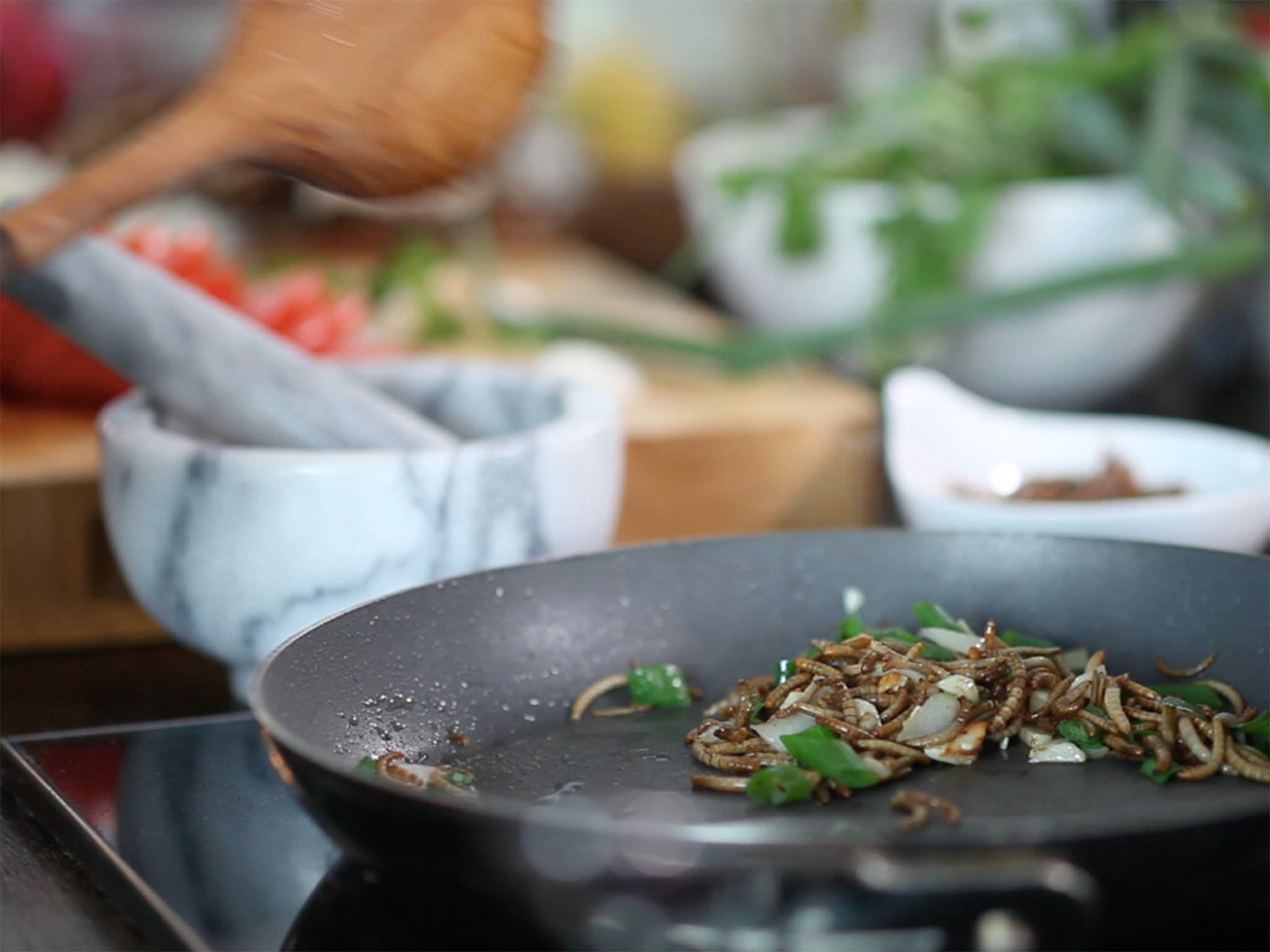Why we should be making a meal out of mealworms
Home-grown once meant you nurtured your own carrots or potatoes, but now Julia Platt Leonard finds a whole new – and sustainable – meaning to it

Livin Farms gives a whole new meaning to home grown. You don’t have to walk all the way to your allotment or even your own back garden to harvest your food because their ‘hive’ sits right on your kitchen table or desk. Even better, the food you harvest matches the protein content of beef but without the environmental downside of raising cattle.
Sound too good to be true?
There is one tiny catch. You’ll be growing mealworms. Yes, mealworms. Livin Farms founder Katharina Unger knows that the very idea of growing, harvesting and – yes – eating bugs is a big no-no for many of us. But she says it shouldn’t be. “Think of it as land shrimp! From an evolution perspective, mealworms are nothing more than a shrimp that hopped on land a long time ago and became an insect. That’s why you shouldn’t be eating them if you’re allergic to shellfish. That’s how closely related they are.”
She says the pros far outweigh any squeamishness we may have about eating bugs. Mealworms combine the ‘best of’ animal and plant proteins, need only one quarter of the feed (and most of that can be leftover fruit and veg from our own tables), and 10 percent of the land.
So how does it work? The hive is basically a set of six-climate controlled drawers. You start by placing a starter pack of ‘micro livestock’ (aka mealworms) in the top pupation compartment. This first batch matures into beetles and breeds, producing mealworms. From there, they begin the journey downward, shifting to a lower level each week until they reach the bottom and can be harvested. Each tray has a louvered bottom which can be opened to drop the growing mealworms to the next level.
There are fans and a ventilation system with filters so no nasty smells. Unger and her team have kitted the Hive with an intelligent system of sensors and heating elements so the climate is ideal for mealworm growth. Think of it as a well-designed hotel with all the mod cons that a discerning mealworm wants.
When your future supper lands in the bottom harvest drawer they’re cooled so they stop developing and don’t become full-grown beetles. At this point, you collect them and freeze them before cooking them. And yes, they should be cooked – no mealworm sushi. The cooked mealworms can be kept whole or ground and used in everything from muesli to cookies to soups and stews. “They taste slightly nutty and mix well into all sorts of dishes. It’s actually a very pleasant experience. Just give it a try and I promise you won’t regret,” Unger says.
The cycle is continuous so once you’re up and running, you’re getting a harvest of a minimum of 150g each week. If you’re a convert and want more, you’ll need to buy more Hives as there currently isn’t a larger, more commercial size (though that is planned for the future). And of course, if you go away on holiday, you’ll want a Hive sitter to keep the process going, although it doesn’t take much to run and maintain a system.
What isn’t minor is that many of us have a real aversion to bugs in general and eating them in particular. Unger feels this is akin to what we once felt about eating raw fish and also notes that in other cultures people freely eat bugs without any qualms. And she’s got a point. Many countries eat insects either out of choice or necessity, including parts of Mexico, South America, Africa and South East Asia.
Interestingly, Unger says that some of her customers are vegetarian and vegan. “They often find it ethically more acceptable to eat insects rather than mammals,” she says. The mealworms also offer valuable Vitamins B12 and B5 and fibre (which meat doesn’t). “The fatty acid profile is excellent, the protein content similar to soybeans.”
Unger isn’t the only one who’d like us to eat bugs. Grub is an online shop selling prepared grasshoppers, crickets, mealworms and buffalo worms. Unger says that Livin Farms is different in that you grow your own, controlling the diet of your mealworms so you know exactly what you’re eating.
Unger isn’t advocating that we give up meat altogether and says that she and most of her team eat meat, albeit much less these days. By including mealworms in our diets, we get the protein we need without putting undo strain on the land, environment and also our pockets. With food prices overall on the rise, the economic benefit of growing your own protein does look tempting.
Thanks to a 2016 Kickstarter campaign, Livin Farms is shipping out the first 300 farms this October, including some to the UK. The Hive is a compact 30cm x 40cm x 55cm and weighs only 10 kilos and costs $579 US dollars (£440), but that’s your only investment. Unger hopes that early adopters will spread the word and that with time, marketing and word-of-mouth, that more of us will become converts.
If you do take the plunge and need some culinary inspiration, there are several insect cookbooks out including On Eating Insects: Essays, Stories and Recipes by the Nordic Food Lab. The food photos in this book are so gorgeous that you just might find you’ve got the bug for bugs.
On Eating Insects: Essays, Stories and Recipes by Nordic Food Lab (Phaidon)
Subscribe to Independent Premium to bookmark this article
Want to bookmark your favourite articles and stories to read or reference later? Start your Independent Premium subscription today.

Join our commenting forum
Join thought-provoking conversations, follow other Independent readers and see their replies